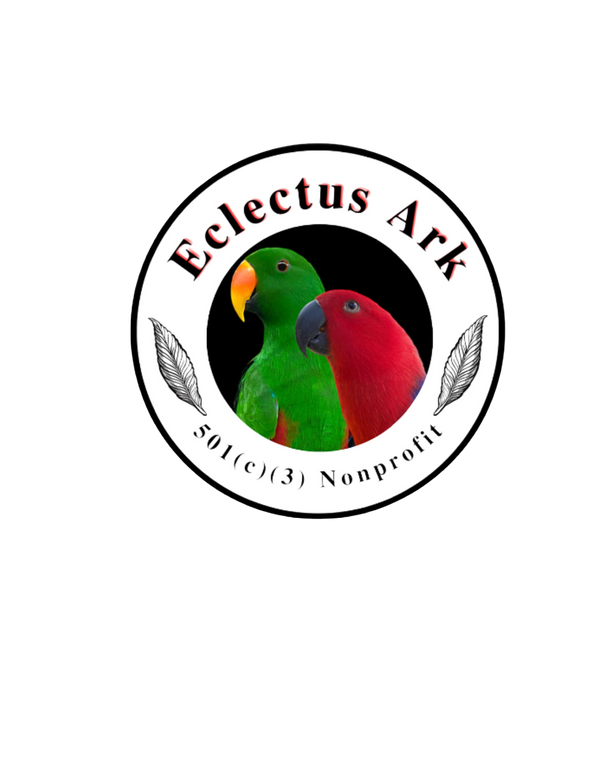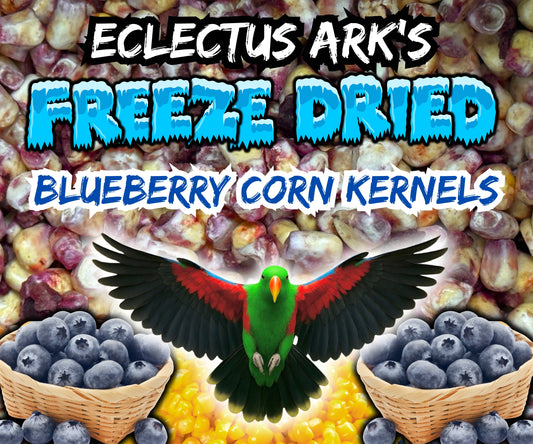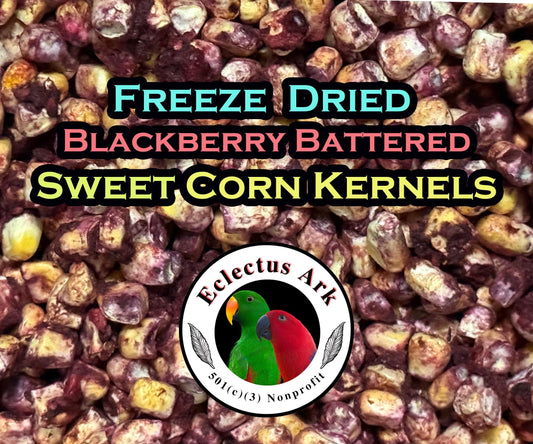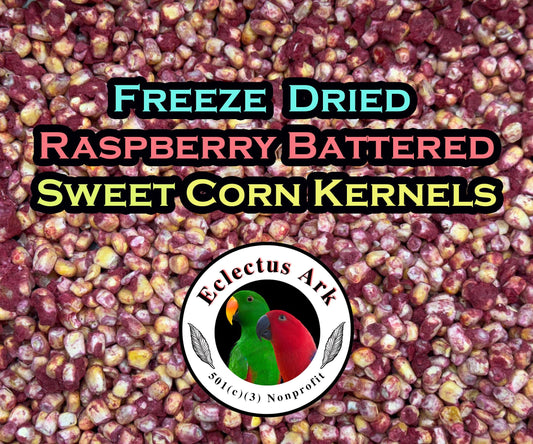Critical Information on Eclectus Parrots
Written by Laurella Desborough, April 1, 2025
1. Housing
Never keep a male and female Eclectus in the same pet-type cage. The female claims the entire cage as her territory and may attack any bird in that space—including her mate. In the wild, males leave the area for hours to forage, and she expects the same in captivity. Even if they bond as a pair, always provide two separate cages so the male can retreat safely. They can interact outside their cages or share one cage
🔴 only if the door is open to allow the male to exit.
🔴 Too many males have died due to territorial aggression in shared cages.
2. Perches
Eclectus parrots require soft wood perches to chew and maintain healthy beaks. This is an essential genetic behavior.
🔴 Hard dowels, fabric perches, or manzanita branches are not suitable.
🔴 Use untreated pine, fir, or natural branches.
🔴 Soft perches are especially important for young birds.
🔴 Wood toys do not fulfill this need, as toys move while chewed—perches offer stability.
3. Diet
Some diet choices are harmful to Eclectus parrots:
🔴 Commercial foods with man-made vitamin A can trigger muscle spasms.
🔴 Dyes in foods may cause internal inflammation, feather destruction, or crop mutilation.
🔴 Never feed eggs—they may lead to arterial plaque and strokes.
🔴 An ideal diet includes fresh vegetables and fruits, raw nuts (like almonds and pine nuts), unfortified seeds, and plenty of fresh greens like kale and dandelion.
🔴 Be cautious of internet sources—many repeat unverified claims or promote products for profit.
🔴 Remember: seeds aren’t bad—pellets are made from seeds. Many pellet-heavy diets recommended by vets are not suitable for Eclectus parrots, who require high moisture, fiber-rich fresh foods.
4. Going Outdoors
When taking your Eclectus outside:
🔴 Always use a harness or secure carrier—even clipped birds can fly.
🔴 Never leave your bird alone outdoors in a cage.
🔴 Predators, theft, or heat stroke can result in injury or death.
🔴 Supervise any outdoor time, and ensure there is always shade available.
5. Vet Visits
🔴 Book appointments early in the day to reduce exposure to airborne viruses from other birds.
🔴 Do not allow your Eclectus to receive a vitamin shot—these have proven fatal in many cases.
🔴 Stay with your bird during all procedures—being handled by strangers can cause deadly stress.
🔴 If a vet refuses your presence, leave immediately and find one who will let you stay.
6. Routines
🔴 Parrots thrive on regular feeding schedules.
🔴 Irregular feeding leads to stress, health problems, feather chewing, and behavioral issues.
🔴 Feeding at consistent times helps maintain calm, healthy, and happy birds.
7. Talk to Your Bird
🔴 Eclectus parrots understand more than most owners realize.
🔴 Explain changes, trips, or events—like travel, vet visits, or new cages.
🔴 Example: “Kiwi, I’ll be gone for four days, but Johnny will feed you.”
🔴 Parrots who are informed feel safe, and will greet you happily upon return. Those left uninformed may respond with biting and aggression due to stress and fear.
8. Wing Clipping
🔴 Many clipped young Eclectus develop feather chewing due to irritation from cut feather ends.
🔴 These parrots have very thin feathering on their sides, making them sensitive to rough feather stubs.
🔴 Clipped birds may walk more, increasing floor-related dangers.
🔴 Some escape outdoors despite being clipped—many have been killed after short panic flights.
🔴 If your bird is clipped, implement serious safety protocols.
Featured collection
-
Freeze Dried Pobalano Pepper Battered Sweet Corn
Regular price $8.50 USDRegular price -
Freeze Dried Blueberry Battered Sweet Corn
Regular price $8.50 USDRegular price -
Freeze Dried Dragon Fruit Battered Sweet Corn
Regular price $8.50 USDRegular price -
Freeze Dried Blackberry Battered Sweet Corn
Regular price $8.50 USDRegular price -
Freeze Dried Passion Fruit & Kale Battered Sweet Corn
Regular price $8.50 USDRegular price -
Freeze Dried Raspberry Battered Sweet Corn
Regular price $8.50 USDRegular price -
Freeze Dried Pineapple Battered Sweet Corn
Regular price $8.50 USDRegular price -
Freeze Dried Strawberry Beet Battered Sweet Corn
Regular price $8.50 USDRegular price -
Freeze Dried Cherry Battered Sweet Corn
Regular price $8.50 USDRegular price -
Freeze Dried Guava Battered Sweet Corn
Regular price $8.50 USDRegular price










